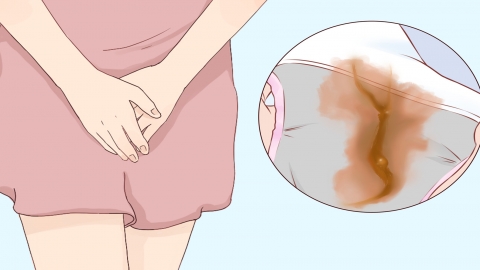What causes brown discharge during ovulation and what should I do?
Generally, brown discharge during the ovulation period may be caused by factors such as estrogen level fluctuations, follicle rupture during ovulation, endometritis, cervical polyps, submucosal uterine fibroids, and others. It is recommended to seek timely medical attention to identify the underlying cause and improve the condition through general care, medication, surgical treatment, and other approaches under a doctor's guidance. A detailed analysis is as follows:

1. Estrogen level fluctuations: Before ovulation, estrogen levels rise, followed by a brief decline afterward, which may cause slight shedding of the endometrium. The oxidization of the blood results in brown discharge that typically lasts for 1-3 days. It is important to rest adequately, avoid strenuous exercise, maintain external genital hygiene, frequently change sanitary products, eat light meals, and reduce the intake of spicy or irritating foods.
2. Follicle rupture during ovulation: A small amount of blood may flow into the pelvic cavity after follicle rupture and appear as brown discharge after oxidation when expelled through the vagina. This may be accompanied by mild abdominal pain. Applying heat to the lower abdomen can help relieve discomfort. Sexual activity should be avoided during the bleeding period to prevent infection, and staying warm to avoid cold exposure is also recommended.
3. Endometritis: Inflammation occurs when the endometrium is invaded by pathogens. Inflammatory stimulation leads to endometrial congestion and bleeding. After oxidation, the blood appears as brown discharge, which may be accompanied by lower abdominal pain. Follow your doctor's instructions to use medications such as metronidazole tablets, levofloxacin tablets, and cefuroxime axetil tablets to control the inflammation.
4. Cervical polyps: Cervical mucosal hyperplasia forms polyps, which are fragile and prone to bleeding. The oxidized blood appears as brown discharge, which may be accompanied by increased vaginal discharge. Smaller polyps can be treated with medications such as Baofukang suppository, Zhimikan suppository, and Xiaomisu suppository, as directed by your doctor, to reduce inflammation. Larger polyps require cervical polypectomy to remove the polyps and improve the bleeding.
5. Submucosal uterine fibroids: Fibroids growing into the uterine cavity may damage the mucosal surface, causing bleeding. The oxidized blood appears as brown discharge, which may be accompanied by increased menstrual flow. Larger fibroids require hysteroscopic resection of submucosal fibroids to remove the fibroid and relieve symptoms.
In daily life, maintain regular sleep patterns, avoid staying up late, keep emotions stable, and reduce mental stress. Pay attention to the amount, duration, and associated symptoms of discharge, and record relevant details to provide reference for doctors' diagnosis and aid in recovery.





